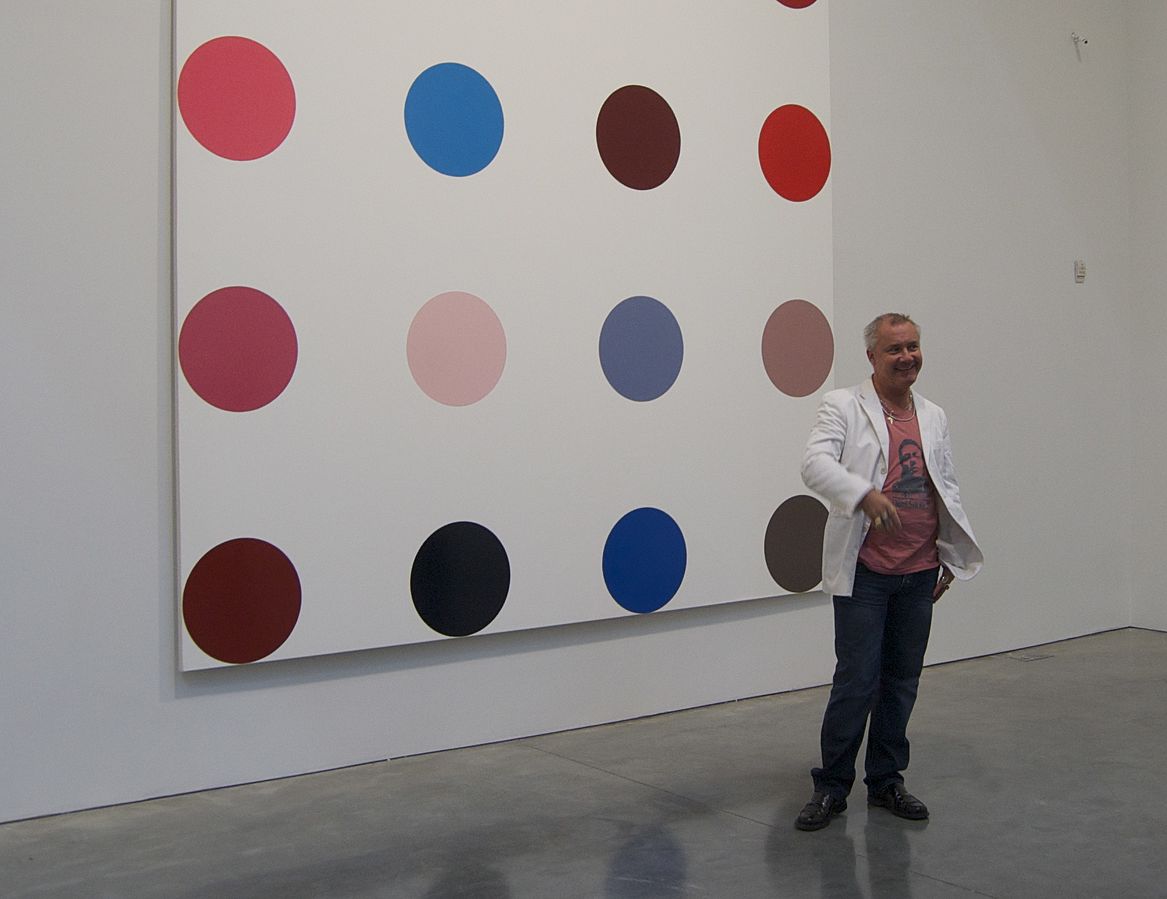From Benjamin to Hirst: Art in a Disposable Age

Image above: "Currencies" by 16:9clue is licensed under CC BY 2.0.
We live in a disposable age. If any further proof of this was needed, we need only look at the latest publicity stunt by Damien Hirst. No stranger to controversy, the artist who made his name pickling animals in formaldehyde set fire to 1,000 of his artworks, livestreaming the event on Instagram, and is set to burn thousands more. It’s part of his nonfungible token (NFT) project ‘The Currency’. With the collection of 10,000 pieces featuring his famous spot prints, collectors were given a choice: take a physical Hirst original or opt for an NFT digital version. Over half chose the digital one.

For an old fogey like me, the idea of replacing a ‘real’ physical artwork with a digital piece feels like a poor deal. But then I was born in an age of notepads, pens, physical books and not a Kindle or iPad in sight. Most students today own few CDs, instead downloading everything on Spotify. DVDs are rapidly becoming obsolete in an age of Netflix subscription. Meanwhile, digital printing has transformed the world of publishing, opening the door for new writers to print on demand, rather than jump through the hoops of traditional publishers. Arguably, this can be a good thing, democratising art, making it more accessible and freeing it from the confines of academic gatekeeping. In the world of music, platforms such as Bandcamp allow upcoming bands to instantly record and stream their creations to would-be fans across the globe.
And yet…there is something dystopian about the disposable and temporary nature of digital art. The fact that Hirst’s actions were livestreamed on Instagram is telling. We live in an era where nothing is ever ‘real’ unless it has been streamed online. We reveal our inmost secrets to strangers, playing out the movies of our lives in real-time, watched by millions. We scroll through a daily diet of doom, gloom and fear, as computer algorithms analyse our every move, sending us down ever darker rabbit-holes of conspiracy and half-truths. In so doing, so we rapidly become the witness of our own destruction.
I am reminded of this famous quote from Walter Benjamin’s ground-breaking sociological essay, ‘The Work of Art in the Age of Reproduction’:
Mankind, which in Homer’s time was an object of contemplation for the Olympian gods, now is one for itself. Its self-alienation has reached such a degree that it can experience its own destruction as an aesthetic pleasure of the first order.
Benjamin’s essay was written in 1936, a time when mass-produced media was just starting to take off in a big way. Fine art pieces, valued for their uniqueness, were now able to be copied and disseminated in high volumes to the masses. At the same time, the advent of moving pictures through film was able to capture moments in real time – something the Old Masters could only have dreamed of. And whilst this was good for the democratization of art, bringing it to new audiences, it also opened the gateway for its capitalist commodification.
All artists must face this dilemma – how to share our work with a wider (not small, elitist) audience whilst at the same time maintaining originality and integrity. A painting locked in a vault for its high financial value is no longer art but commodity. Likewise, a manufactured popstar churning out music-by-numbers hits at the behest of a money-grabbing producer might earn millions, but loses a part of their soul in the process.
Marx himself acknowledged something of this dilemma, with his statement:
capitalist production is hostile to certain branches of spiritual production, for example, art and poetry’ - (p.141, Economic Manuscripts, 1857-1858).
This is not to deny the possibility of the development of literature and art under capitalism. However, the very nature of the capitalist system of exploitation is in contradiction with the humanist ideals which inspire genuine artists.
As the world looks on as Hirst’s original artworks go up in smoke, I am left wondering – can digital art, with its potential for infinite reproductions, ever be anything but a poor substitute for the real thing?
Perhaps it is the ephemeral nature of art which lies at the very heart of its appeal. It speaks, ultimately, of our own mortality – the primeval urge to leave something of ourselves behind for future generations to enjoy, even if we know, in our heart, that it cannot last. It is this same desire that fuels the dispossessed and disenfranchised to scrawl their tags across every suburban city wall – the need to not feel disposable, to shout to the world: ‘I Was Here’.
Perhaps – who knows – this is the point that Hirst is trying to make? That, in the midst of a digital, disposable era, the only ‘real’ thing, the only thing worth possessing, is a knowledge of our own unique but temporary imprint upon the world? If so, it is a point well made. We must cling onto such brief moments of sublime beauty as often as we can. We have no idea how quickly they might be gone.

Rebecca Lowe
Rebecca Lowe is a journalist, poet and Quaker peace activist, based in Wales, UK. She is a Bread and Roses Spoken Word 2020 Award winner, has appeared on BBC radio, and her poetry has featured in many anthologies including Red Poets, Blackheath Countercultural Review, and the Ymlaen/Onward! anthology of radical Welsh poetry (Culture Matters, 2019).
